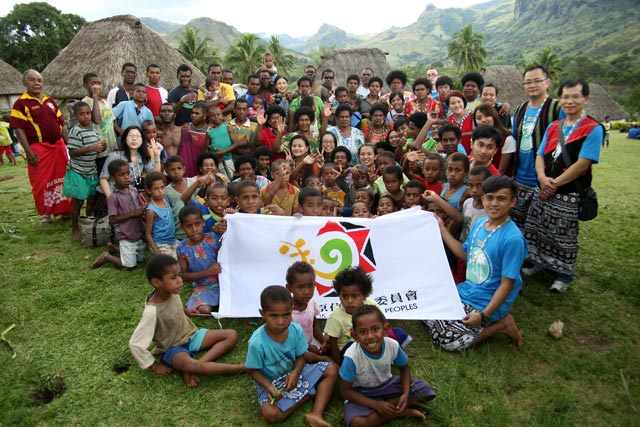Cultural Exchange Program in Fiji

本屆國際交流地點為斐濟,以其觀光、文化和優美的自然環境聞名,此次國際交流行程也以觀光和文化發展為主軸,參訪四個各俱不同特色原住民村落(Navala Village、Navua Village、Muaivuso Village和Korovo Village) ,另外,也至斐濟南太平洋大學舉行座談會。不但有機會瞭解太平洋區域歷史發展和自治現況,也瞭解太平洋島國人民的自我認同和歸屬感的建構,並也透由和學校的老師和同學的互動,建立未來交流的管道和聯結。最重要的是,此次斐濟原住民事務部 (Ministry of iTaukei Affairs)常務次長 Mr. Savenaca Kaunisela親自接待我們此次的到訪,並且本次國際交流的成果也在斐濟太陽報和斐濟時報兩大報紙刊登,成功讓斐濟國際友人了解台灣原住民文化的特色,更將台灣原住民文化的豐富性推廣國際舞台上!
eRenlai.com gathered the impressions and the reports written by the students in the Focus 'Exhibiting Indigeneity: Lessons from Fiji'
After going to Canada last year, the Taiwanese Council of Indigenous Affairs and the Taipei Ricci Institute led this time a group of Taiwanese aboriginal students on an eleven-day cultural exchange trip to Fiji, an island nation in the South Pacific Ocean. The purpose of this mission was for the students to see how other indigenous people cope with contemporary society and to build a sense of kinship with the native Pacific islanders who shared the same Austronesian ancestral roots. Two months later, they have turned their experiences into memorable stories illustrated with beautiful photos and videos. From these stories, we can see that while this trip has brought upon new confidence in these students, it is not without new doubts. Thus for this month's focus eRenlai invites you to catch a glimpse of their exciting journey and to think further about what it means to be aboriginal.

Sakenge Kazangiman worries that the need for attraction in tourism will magnify the sensational aspect of Fijian indigenous culture and lead the public impression askew. Sra Manpo Ciwidian envies over the high percentage of landownership that the indigenous Fijians have. Panay Raranges praises the incorporation of the indigenous chiefly system into their modern governmental structure and laments over the fact that the Taiwanese chiefly system have fallen into mere formality. Lu Xiaoyun questions why indigenous people only make up around half of the Council of Indigenous People in Taiwan, when all members in Fiji's Ministry of iTaukei Affairs are indigenous. Turning a more critical eye, Kalih Didiyun observes the turbulent history between the indigenous and indo-Fijians and sympathizes the Indo-Fijians who hold little say over political issues. To wrap up, Conor Stuart, our editorial staff who accompanied these students to Fiji, maps out the gradation of identification that ranges from blind idealization of nativist aboriginal image to the dispassionate acknowledgment of the integral nature of aboriginal culture and modern society and points out the danger of essentialism from his own specifically Irish perspective.
Read the whole focus here: Exhibiting Indigeneity: Lessons from Fiji
Also read an article in the Fiji Times: Taiwan students on exchange visit

